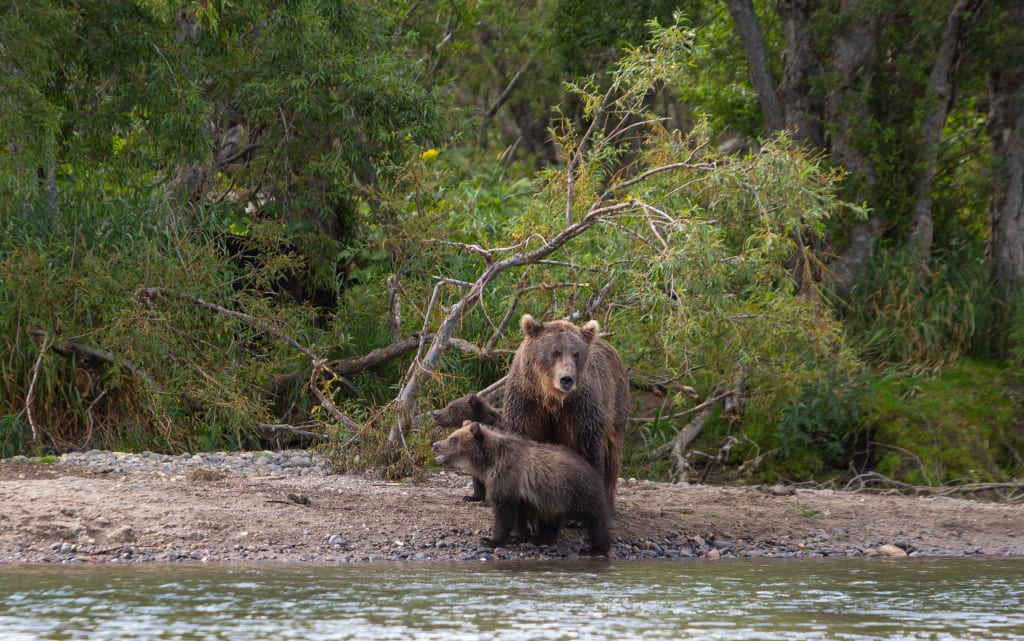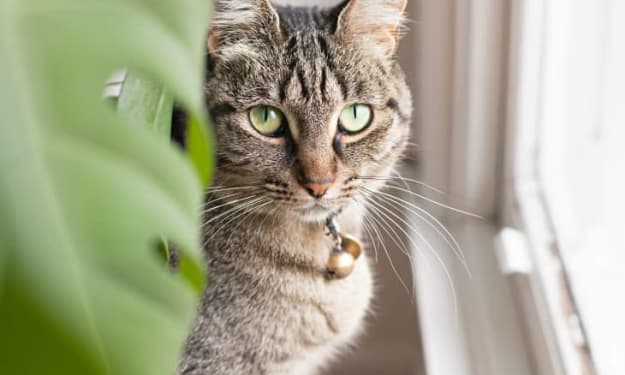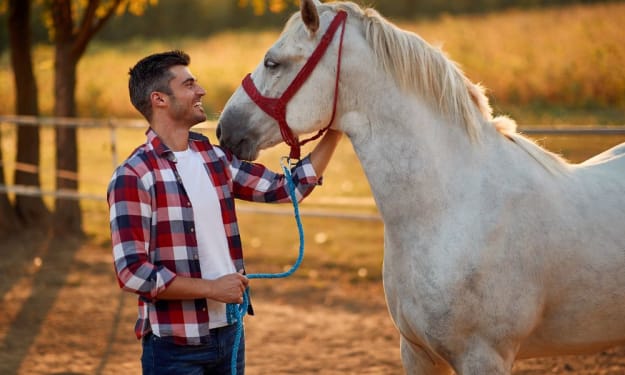9 Animals That Are Adorable But Could Kill You.
Some of the cutest species are also dangerous, despite the fact that they appear harmless and gentle.

Many of nature's cutest creatures may appear innocent and pleasant, yet they often have much more dangerous qualities than just adorable faces. Here is our list of the top 9 most adorable animals in the world that are also the deadliest. You might be shocked at how dangerous these charming critters can be, from fish to frogs, large cats to cassowaries.
1. Moose
Beware of moose; despite their friendly demeanor, they are among the most hazardous creatures that are frequently seen. Although they prefer to leave humans alone, they have a history of charging aggressively in response to being startled or feeling threatened. When defending a calf or during the rutting season, which lasts from late summer to early fall, they are especially aggressive. They also attack more people each year than bears do. Typically, only one or two people each year are killed by moose attacks. In contrast, because moose are so much larger than deer, driving collisions with them are more likely to result in death.
2. Cassowary
Although the cassowary tends to maintain a low profile, it can become very hostile and territorial if it is startled. It resembles a flashy ostrich prowling the Australian and New Zealandian rainforests when the bird is not in flight. The fast-moving cassowary attacks by thrusting its large claws forward to disembowel its prey. It can run and leap at high speeds. Along with the ability to peck, charge, and headbutt, they can also kick both forward and backward.
The cassowary can jump more than 5 feet in the air and charge at speeds of up to 30 mph. Due to the sharpness of the bird's claws, which are two straight dagger-like claws and one curved claw, tribesmen in New Guinea would place them over the tips of their spears.
3. Bears
The world's largest carnivores, bears are among the most lovable since they are frequently the topic of children's stories and are prized as teddy bears. Given that they are also on the list of animals that have been known to hunt and murder people, this relationship seems puzzling. The two bear species that are most feared are grizzlies and polar bears, while any large bear species, including the vegetarian giant panda, poses a threat.
The 59 fatal black bear assaults that occurred in the United States and Canada between 1900 and 2009 were reported in a study published in the Journal of Wildlife Management.
According to research, predatory bears—lone, hungry males—rather than mothers with young are more frequently responsible for homicide. You should do your utmost to combat them because they discreetly stalk their target from behind. Only when a mother grizzly is being attacked and defending her offspring does playing dead work.
4. Giant Anteater
Although its size would lead you to believe otherwise, this huge monster exclusively eats termites and ants. The fact that it is so large contributes to its danger, but it's real weapons are its strong, acute claws. An anteater may maul a human and inflict a tremendous amount of harm with only one swipe if it feels threatened.
Anteaters are not aggressive and have weak vision and hearing, yet if cornered, they will fight back violently.
When threatened or trapped, an anteater will rear up and support itself on its huge tail. It will strike with its claws, which can reach a length of four inches. The enormous anteater is ferocious enough to repel predators like pumas and jaguars.
5. Pfeffer's Flamboyant Cuttlefish
Don't attempt to pet this cuttlefish. Although cute and vibrant, the displays of this fish act as a warning. This cuttlefish is poisonous, and its muscles contain a highly dangerous substance, just like some squid and octopuses. The only toxic form of cuttlefish is this one.
Even though cuttlefish are rarely seen near people, their poison is thought to be exceedingly fatal and can be comparable to that of the blue-ringed octopus, according to MarineBio. Under those tentacles lies a razor-sharp beak where cuttlefish conceal their venom.
6. Gila Monster
One of the few venomous lizards in the world and the biggest lizard native to the United States is this hefty reptile with pink or orange spots. The Gila monster is slow, yet when disturbed or trodden on, it may inject a painful dose of venom. The lower jaw glands of the lizard are where the poison is produced. The Gila monster has a potent but rarely lethal bite, and it frequently holds its victim for several seconds before releasing them. It will even chew to help spread the venom deeper into its victim.
The University of Adelaide Clinical Toxinology Resources team advises submerging the lizard in water to liberate it from the Gila monster's powerful jaws if it clings onto you.
7. Monkeys and Apes
Because of their closest resemblance to humans, these creatures have a special link with us but also certain drawbacks. Some of the illnesses that apes and monkeys carry are easily transmitted to humans. A little monkey's bite has the ability to transfer a virus like hepatitis C. If they feel threatened, larger apes like chimpanzees, orangutans, and gorillas have the strength to maul a human.
Even chimpanzees treated as pets have occasionally harmed their owners. According to doctors, it might be brought on by violent traits, illness, or even frustration. In any event, don't undervalue their physical toughness. Only the chimpanzee aggressively preys on humans among all other primates.
8. Big Cats
Remember that even though they may resemble an oversized version of your house pet, nearly all big cats that are not domesticated view you as a meal. Pumas can pose a concern to lone hikers and young children in North America. However, if handled improperly or provoked, any of the large cats in the world, including tigers, lions, jaguars, leopards, and cheetahs, can pose a threat to human life.
Only a small portion of the estimated 15,000 big cats maintained in captivity in the United States are housed in certified zoos.
9. Pufferfish
A fully grown, portly pufferfish is one of the cutest fish you'll ever see, but don't be fooled. The pufferfish is the world's second-most toxic vertebrate. To reduce the risk of poisoning and being bitten when removing the hook, fishermen advise using heavy-duty gloves. A pufferfish's toxin, which has no cure, kills by paralyzing the diaphragm and suffocating the victim.
Tetrodotoxin, a chemical that gives pufferfish their foul taste (and occasionally dangerous to fish), is present in almost all of them. When compared to cyanide, tetrodotoxin is up to 1,200 times more lethal. 30 adults could be killed by the venom found in only one pufferfish. In spite of this, it's regarded as a delicacy in Japan, and only highly skilled chefs are permitted to serve it; still, deaths continue to occur yearly.
About the Creator
Fruits And Plants Diary - Get Insight
As a writer, here is the right place to access unique and interesting stories where people always enjoy reading through simple words.
Enjoyed the story? Support the Creator.
Subscribe for free to receive all their stories in your feed. You could also pledge your support or give them a one-off tip, letting them know you appreciate their work.






Comments
There are no comments for this story
Be the first to respond and start the conversation.